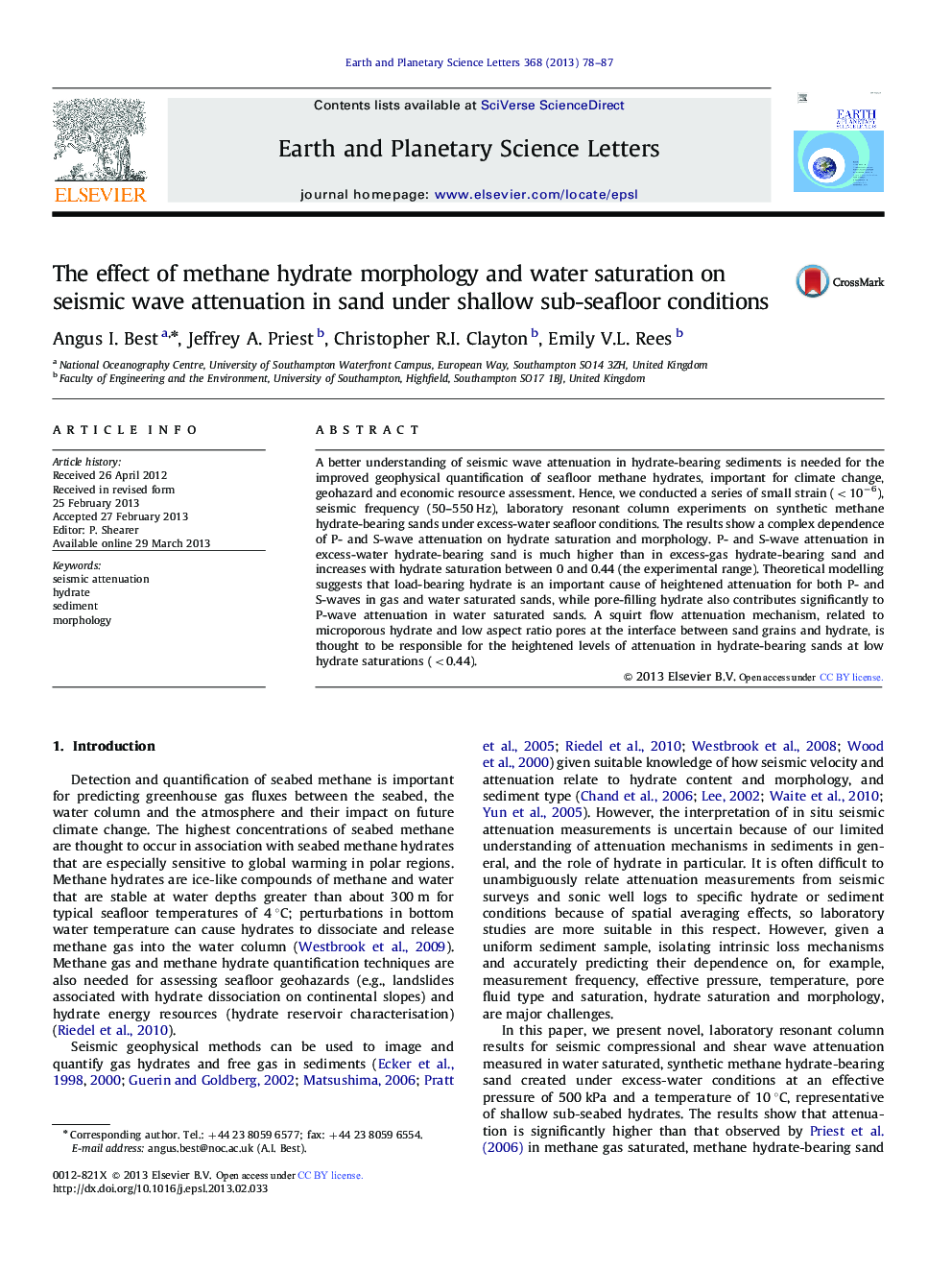| Article ID | Journal | Published Year | Pages | File Type |
|---|---|---|---|---|
| 6430303 | Earth and Planetary Science Letters | 2013 | 10 Pages |
A better understanding of seismic wave attenuation in hydrate-bearing sediments is needed for the improved geophysical quantification of seafloor methane hydrates, important for climate change, geohazard and economic resource assessment. Hence, we conducted a series of small strain (<10â6), seismic frequency (50-550Â Hz), laboratory resonant column experiments on synthetic methane hydrate-bearing sands under excess-water seafloor conditions. The results show a complex dependence of P- and S-wave attenuation on hydrate saturation and morphology. P- and S-wave attenuation in excess-water hydrate-bearing sand is much higher than in excess-gas hydrate-bearing sand and increases with hydrate saturation between 0 and 0.44 (the experimental range). Theoretical modelling suggests that load-bearing hydrate is an important cause of heightened attenuation for both P- and S-waves in gas and water saturated sands, while pore-filling hydrate also contributes significantly to P-wave attenuation in water saturated sands. A squirt flow attenuation mechanism, related to microporous hydrate and low aspect ratio pores at the interface between sand grains and hydrate, is thought to be responsible for the heightened levels of attenuation in hydrate-bearing sands at low hydrate saturations (<0.44).
⺠We present laboratory seismic attenuation observations in hydrate-bearing sand. ⺠We compare results for excess-gas and excess-water methane hydrate formation. ⺠We present seismic attenuation theory to account for microporous hydrate grains. ⺠Load-bearing and pore-filling microporous hydrate can explain attenuation levels.
